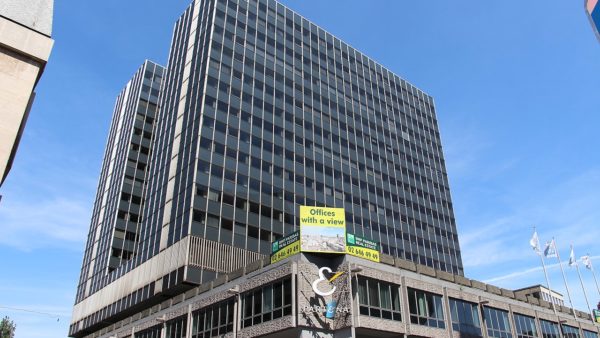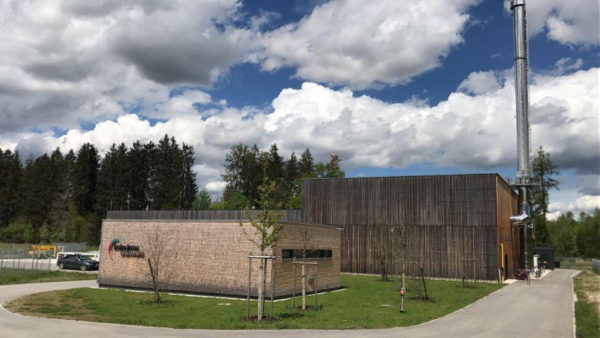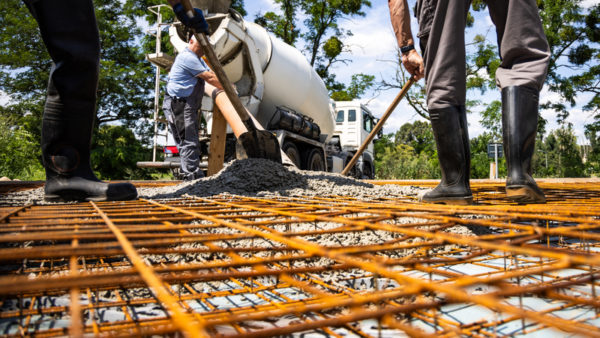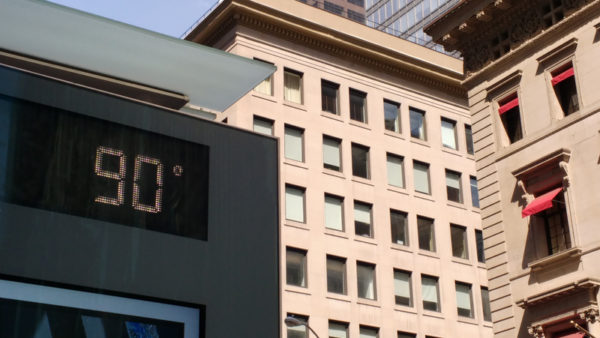The United Nations predicts that, globally, we will construct another 230 billion square metres of floor area in the next 40 years, double the existing floor area at present.
That will mean a lot of concrete, which has an outsized carbon footprint.
At the same time we need to reach carbon neutrality, and have no current practical alternative to concrete in most situations.
How will we reconcile these seemingly irreconcilable demands?
Use less
Although concrete is a low carbon material by weight, with only about 7% of the embodied carbon of steel, it is used in such large quantities that our concrete carbon footprint is huge.
A cubic metre of typical structural concrete has an embodied carbon load of between 250kg-500kg of equivalent calculated carbon dioxide, or eCO2.
Portland cement is responsible for the greatest proportion of eCO2. In concrete, using a pure Portland cement binder, it represents only 10-20% of the concrete by weight, yet accounts for up to 90% of the embodied carbon.
The first step is naturally to reduce the amount of concrete we use.
In many applications, concrete is used in a low stress condition and so is rarely used to its full potential.
In fact, a University of Cambridge report indicated that structural elements are ordinarily only designed to utilise 60-80% of their capacity, in addition to standard safety factors.
Uncertainty in the performance of the material is perhaps a fundamental reason for this degree of overdesign with respect to concrete elements.
Even in laboratory conditions, concrete exhibits complex nonlinear behaviour. After taking into consideration the additional uncertainties of batching consistency, aggregate variation, ambient temperature, as well as construction skill, we are perhaps more able to see why designers exercise caution.
This is why better real-time understanding of concrete behaviour is being further looked into, helping to improve quality assurance and minimise overdesign.
Computational power
Additionally, there are opportunities that may allow a revitalisation in impressive concrete structures.
By sculpting concrete, material can be cut out and as much of it as possible can be placed in a compressive state.
Unfortunately, the design and construction challenges have limited the use of this principle.
However, at present, we are able to tackle these challenges with computational power, advanced digital manufacturing, and a drive for low-carbon structures.
In fact, by using innovative forming techniques to cut out unnecessary concrete, researchers at ETH Zurich have been working on how to apply computational design to create some compression-only concrete, resulting in materially efficient and visually stunning structures.
Less cement
It is also important that we minimise the amount of cement in concrete, which is frequently excessive compared to what is needed to meet the requirements.
In a study by Ramboll of over 90 concrete mixes used in UK projects, it was found that the total quantity of cement (binder) in the concrete varied from 300kg/m3 to 525kg/m3, even for the same specified strength.
Although technical reasons can explain an increased cement content, the range measured largely exceeds the minimum code requirements.
One of the reasons Portland cement has such a large carbon footprint is because carbon dioxide is emitted during the key chemical process in its manufacture, the calcination of limestone.
These emissions account for 50-60% of the carbon emissions associated with cement. Even if the remaining emissions could be substituted with a carbon neutral source, using costly carbon capture and storage technology to offset these process emissions would still be necessary.
Different cement
To reduce carbon intensity of the cement, increased replacement of Portland cement with supplementary cementitious materials (SCMs) will be key.
However, the two most common SCMs – ground granulated blast slag, and fly ash – are co-products of steel blast furnaces and coal fired powered stations, respectively. Therefore, the life of these SCMs is limited by our need to address the carbon intensity of those industries.
Towards mid-century, these SCMs will be in short supply.
Therefore, it will be necessary to combine multiple SCMs in the future, most likely by using calcined clays and ground limestone.
Furthermore, it has been proposed that by 2050 we will need to be recycling 20% of cement paste from demolition waste as new feedstock to cement kilns – recycled paste would not release the same process emissions as limestone alone.
Currently, through a greater understanding of behaviour, optimised design, carbon focused specifications and an increased use of SCMs, steps can be taken to reduce unnecessary concrete, cement and carbon.
Looking ahead, developing and utilising new concrete technology with new mixes, designs and forms of construction, will be the greatest priority.
Rather than stifling innovation, carbon constraint may change the industry for the better, perhaps finding that the solutions surpass their carbon intense predecessors.
Image: Santiago Calatrava’s Auditorio de Tenerife (Taxiarchos228/CC BY-SA 3.0)










